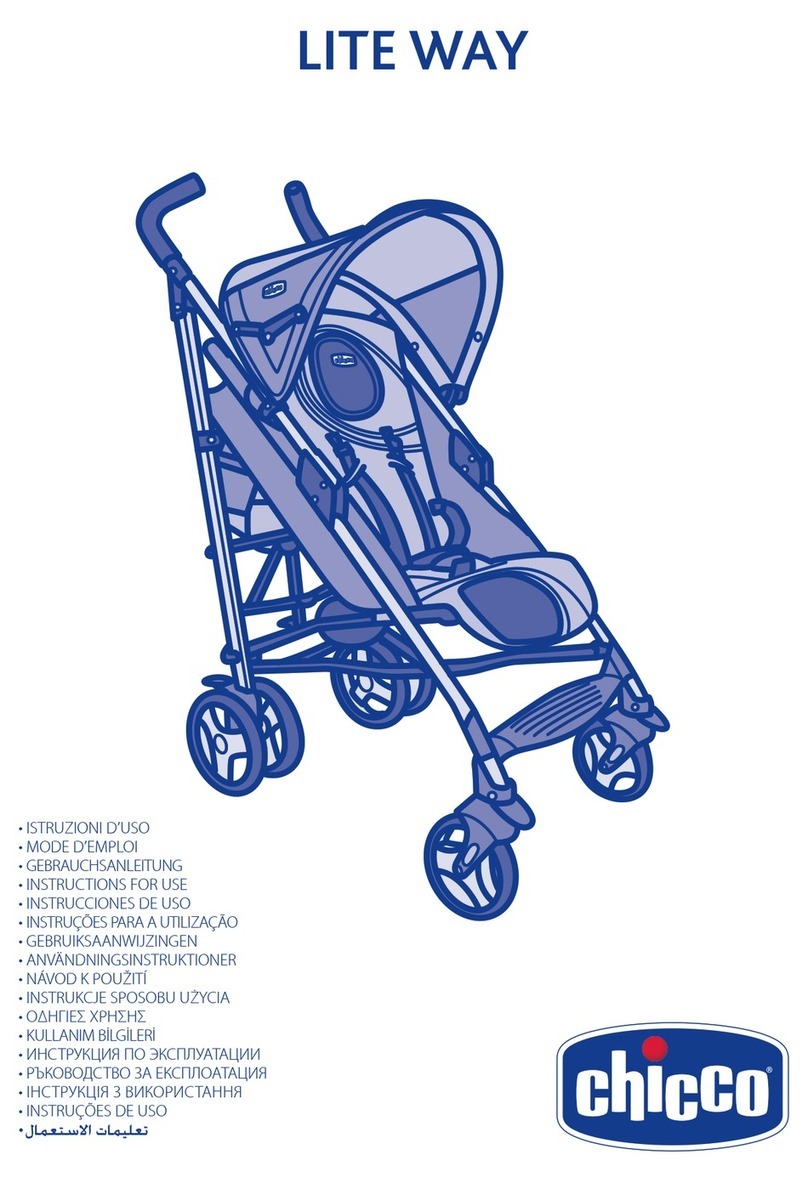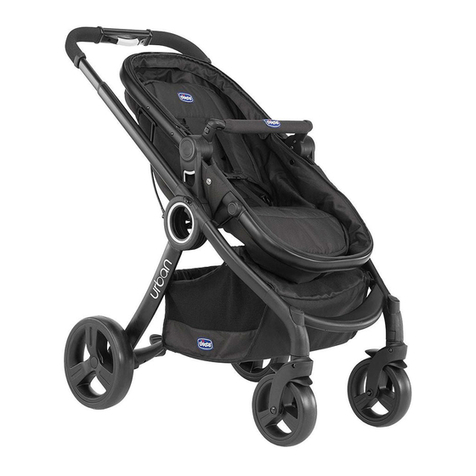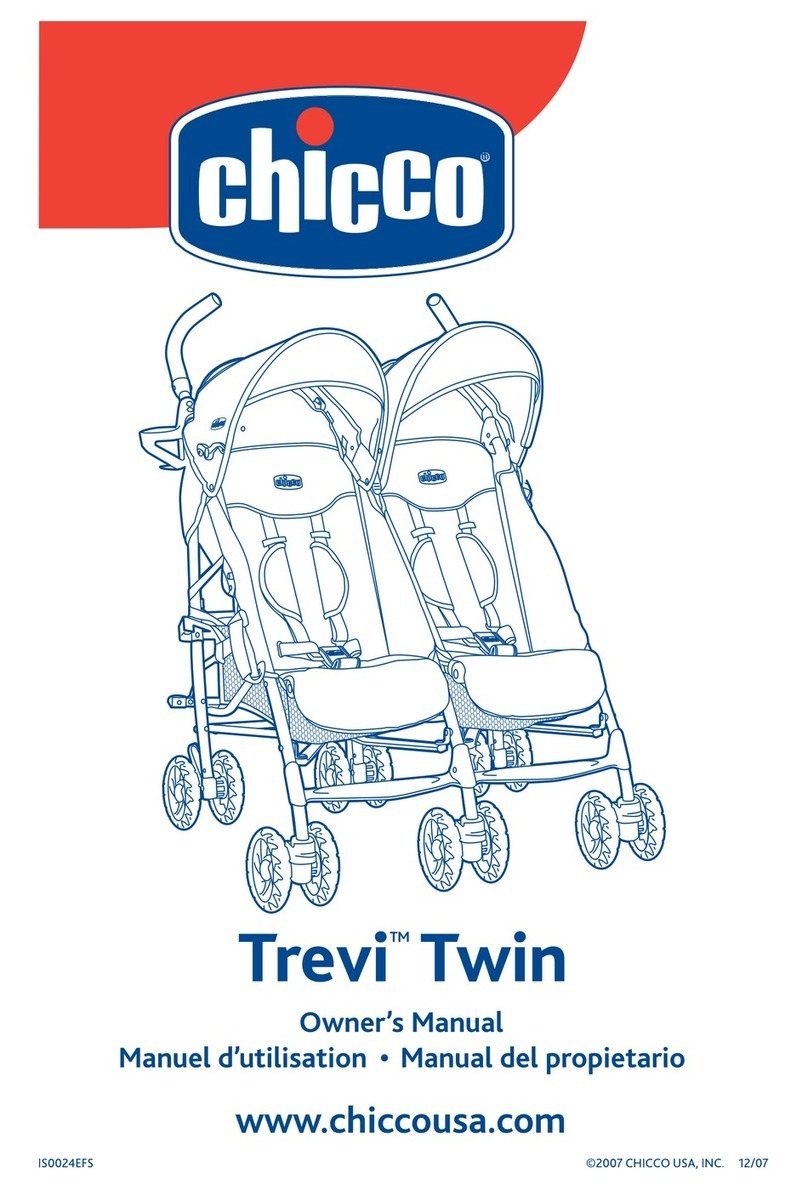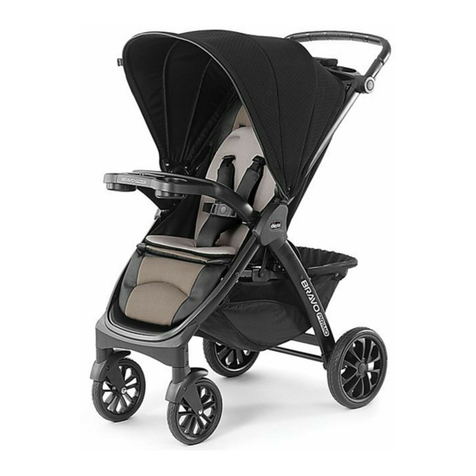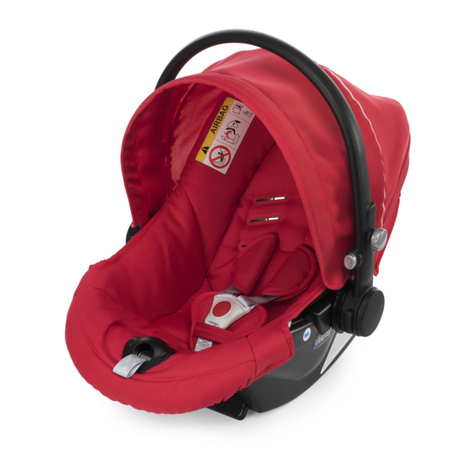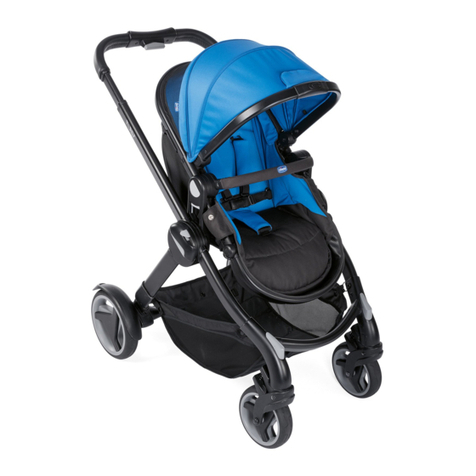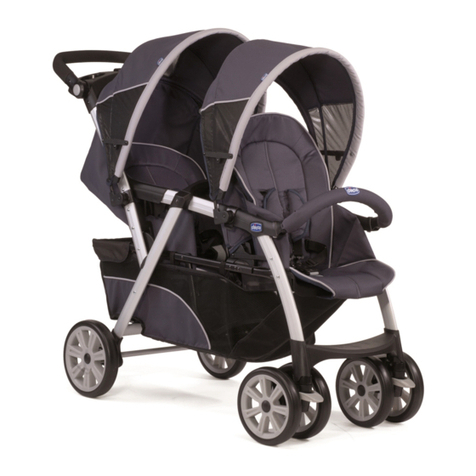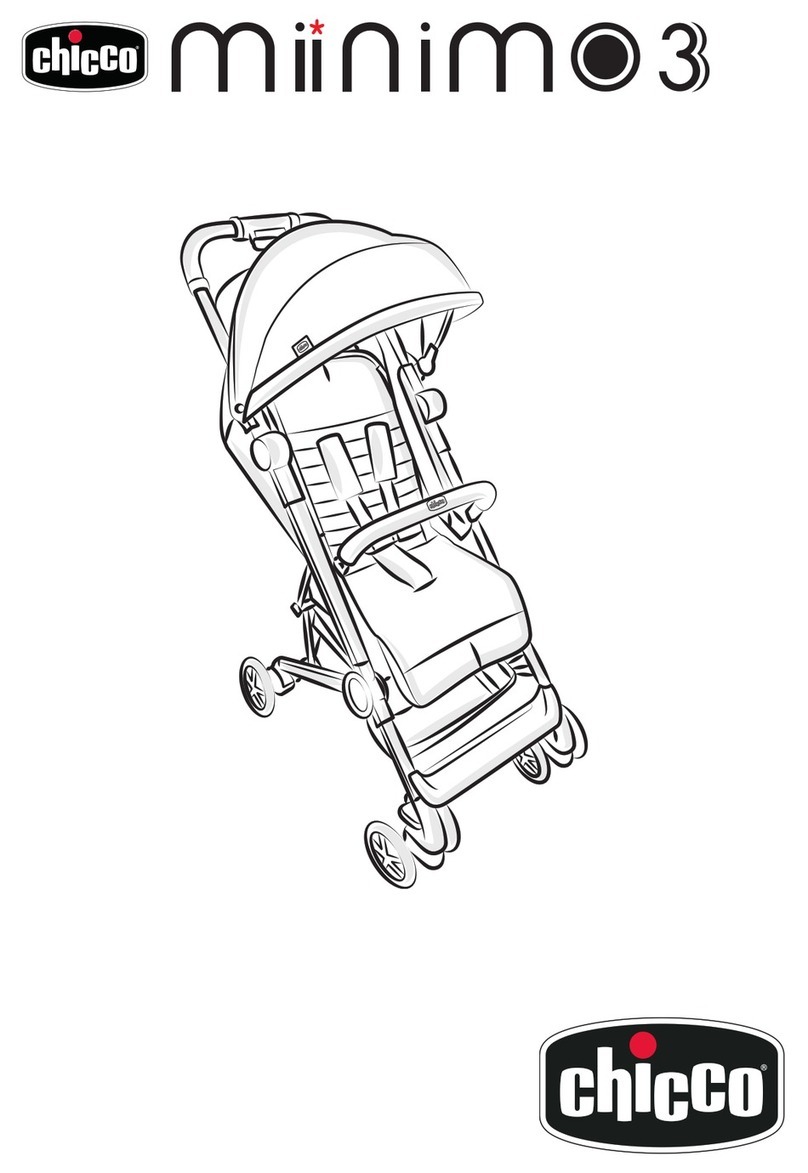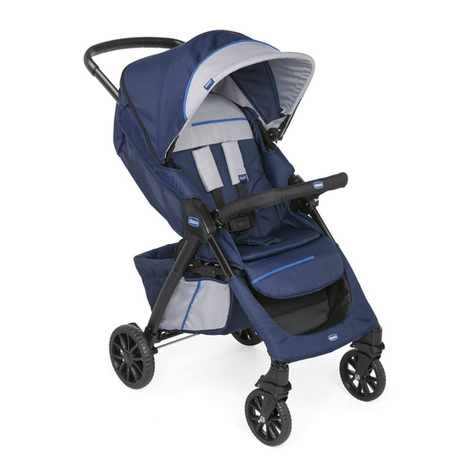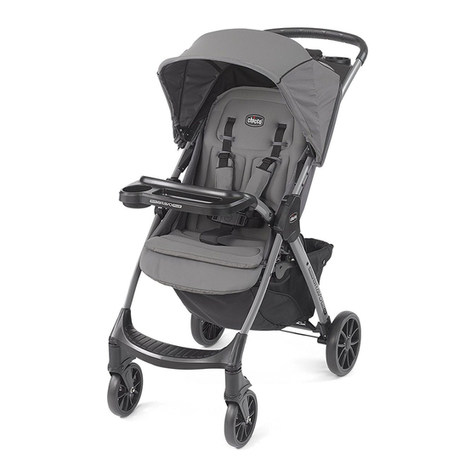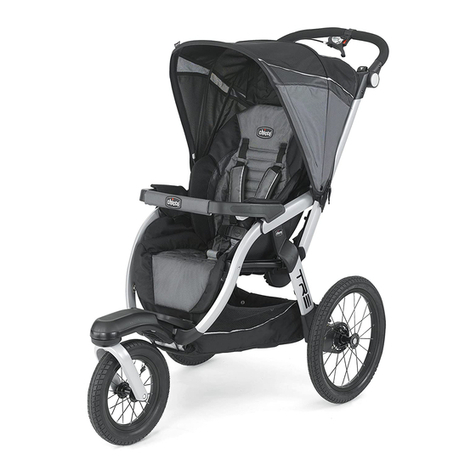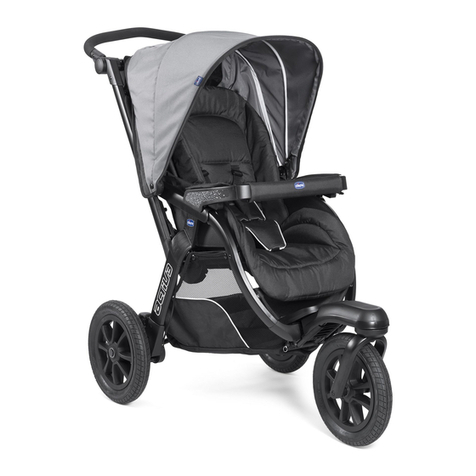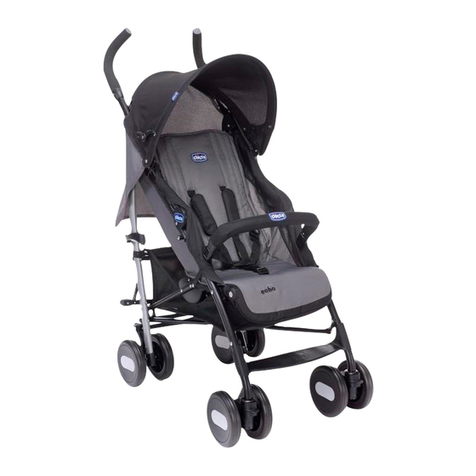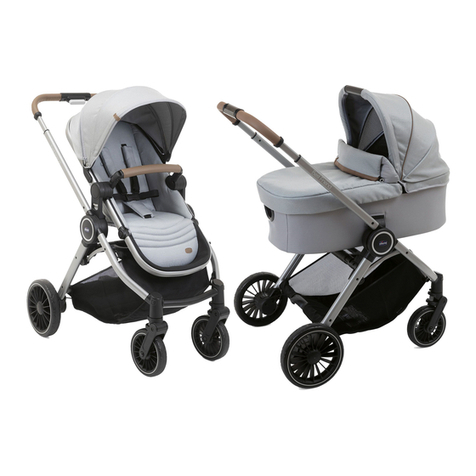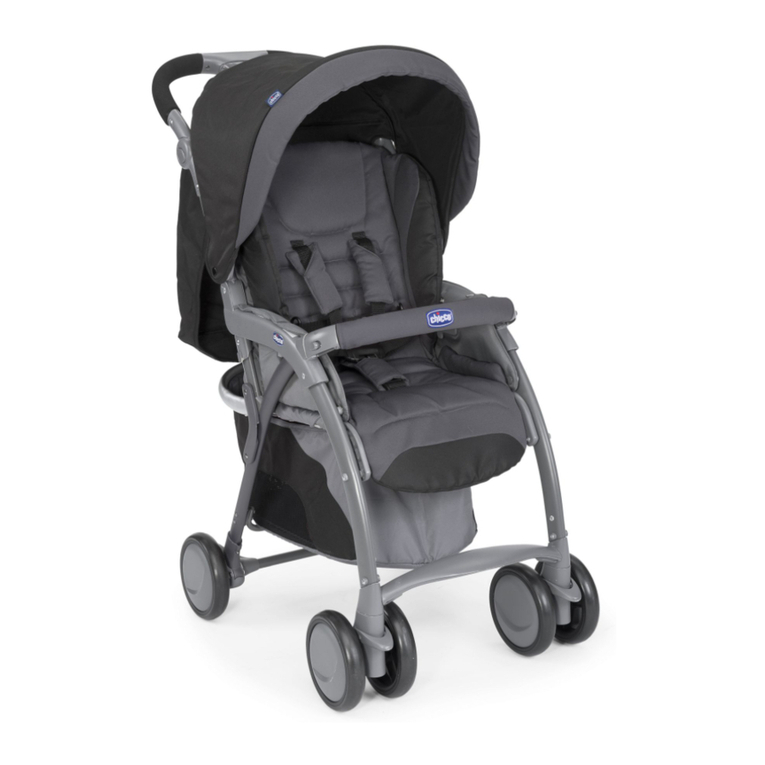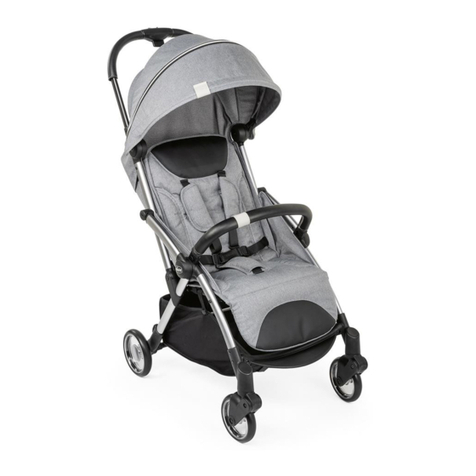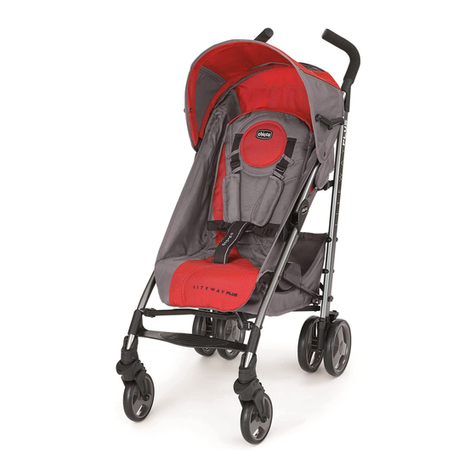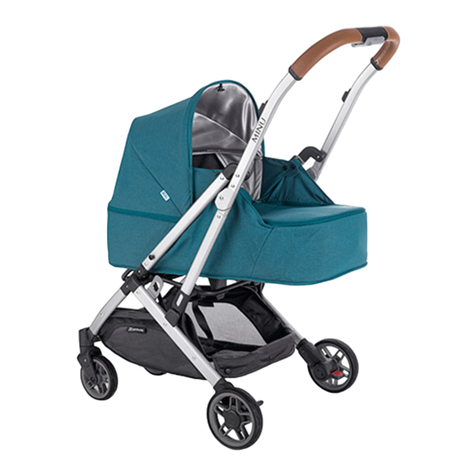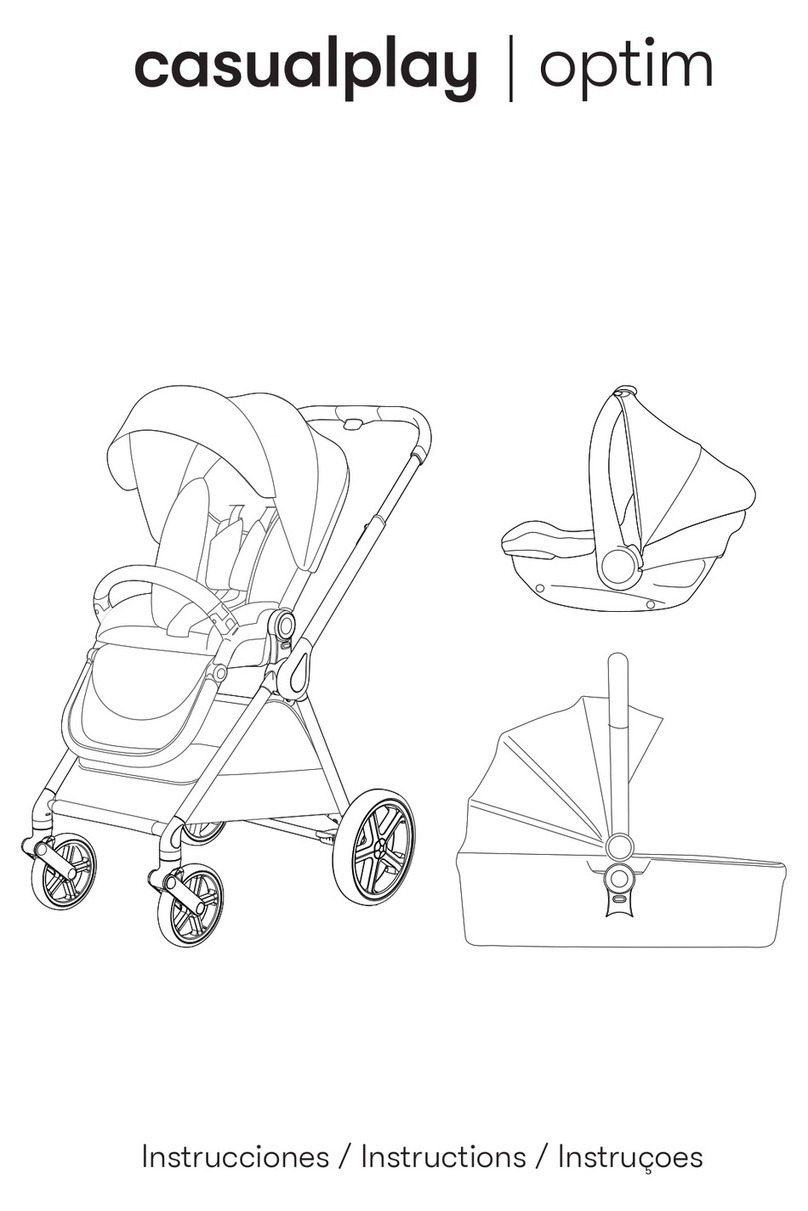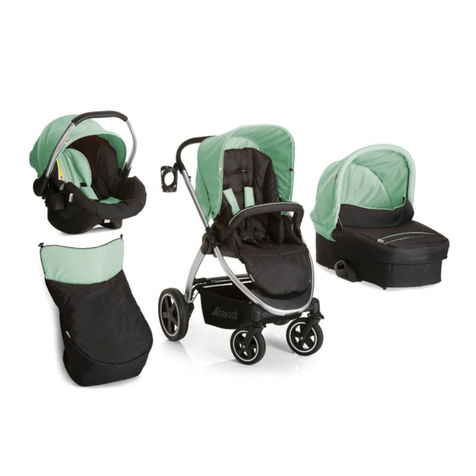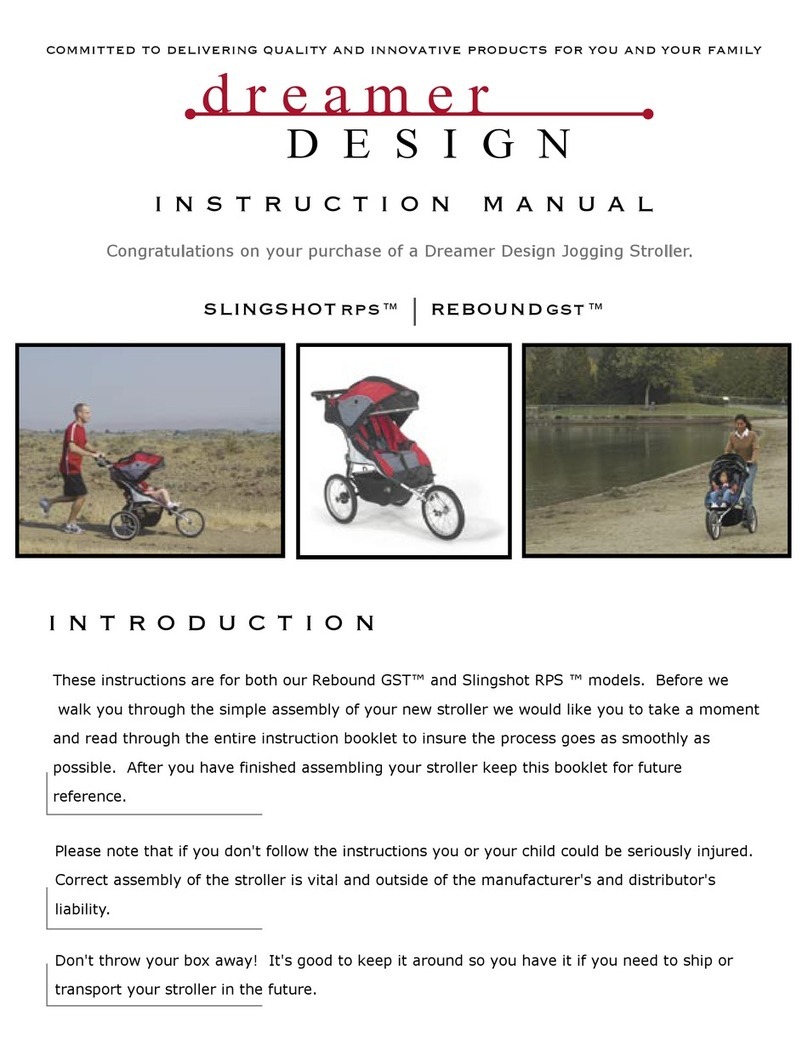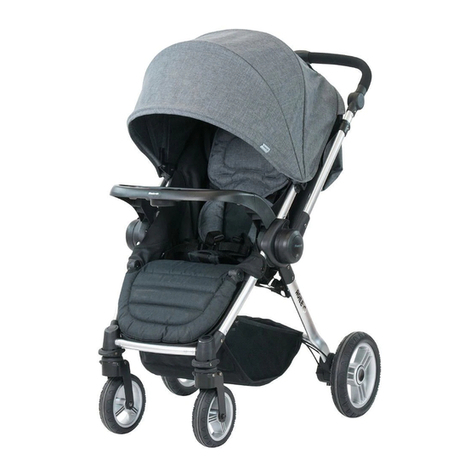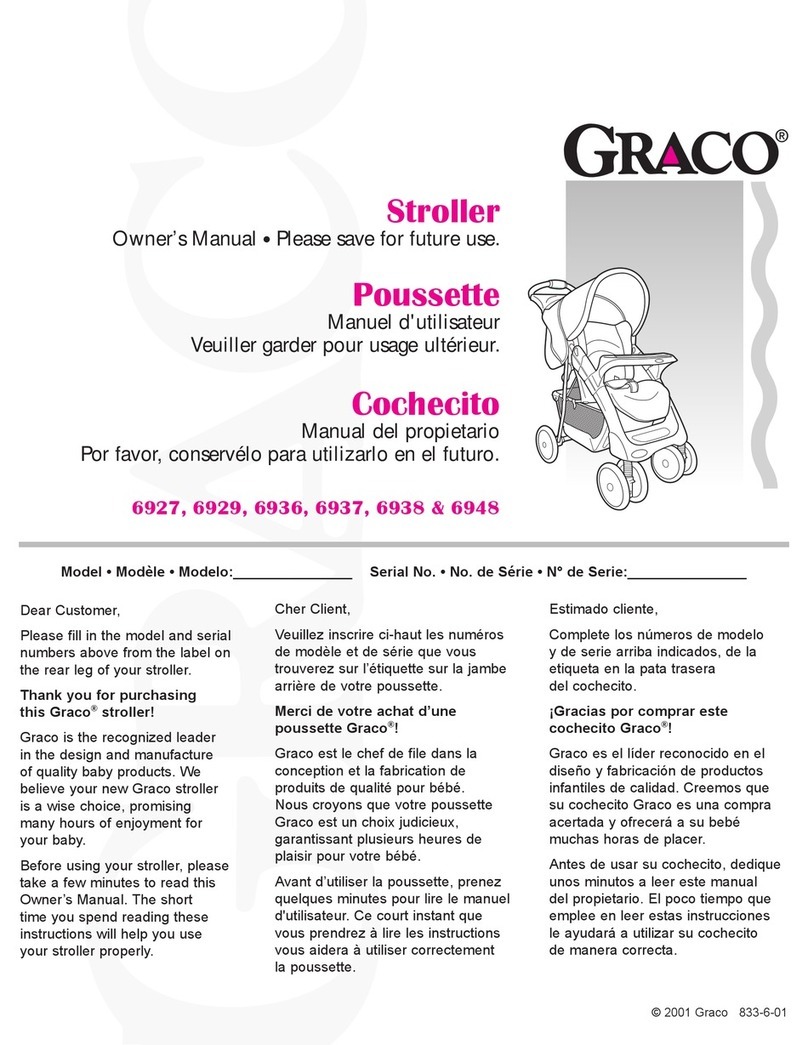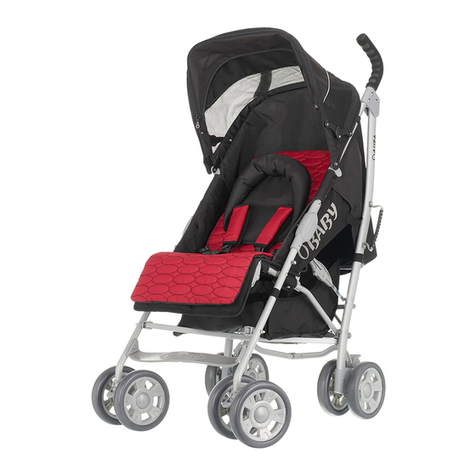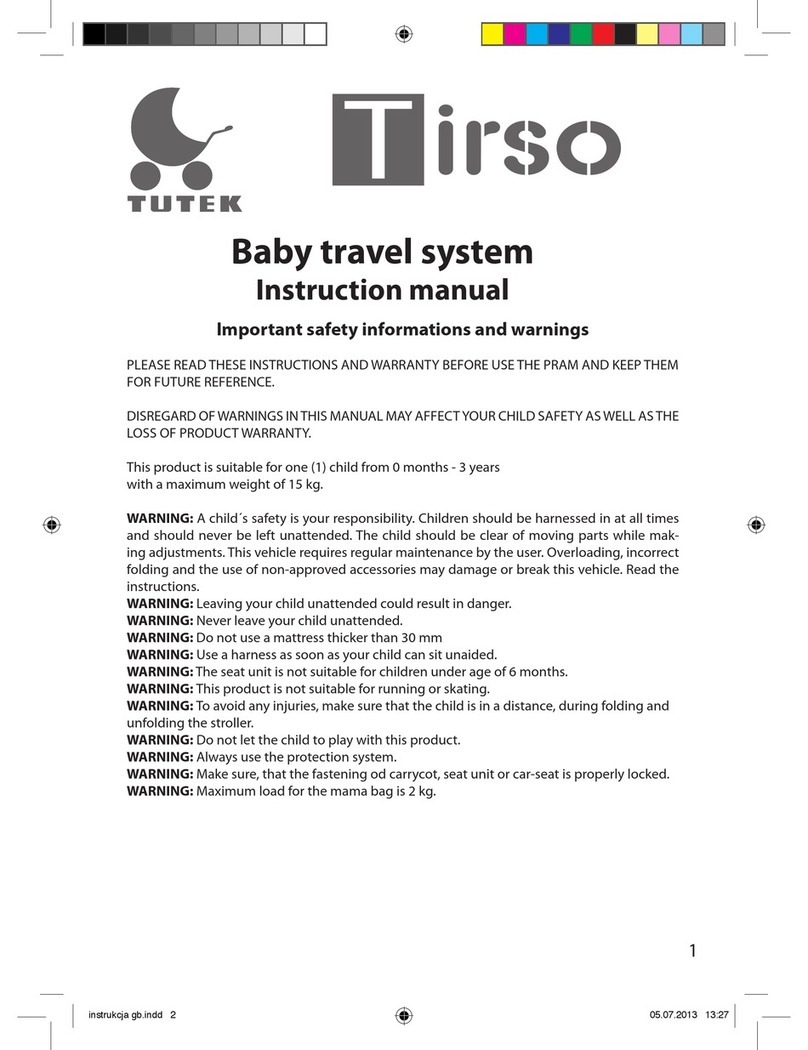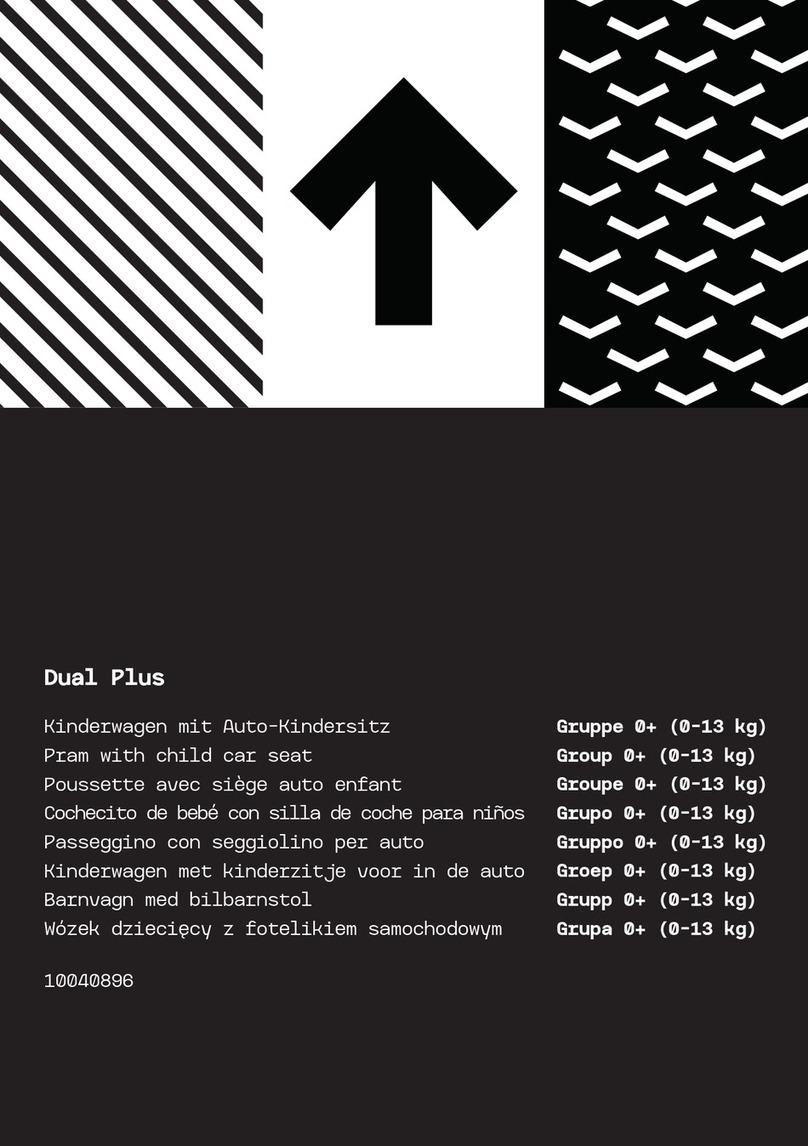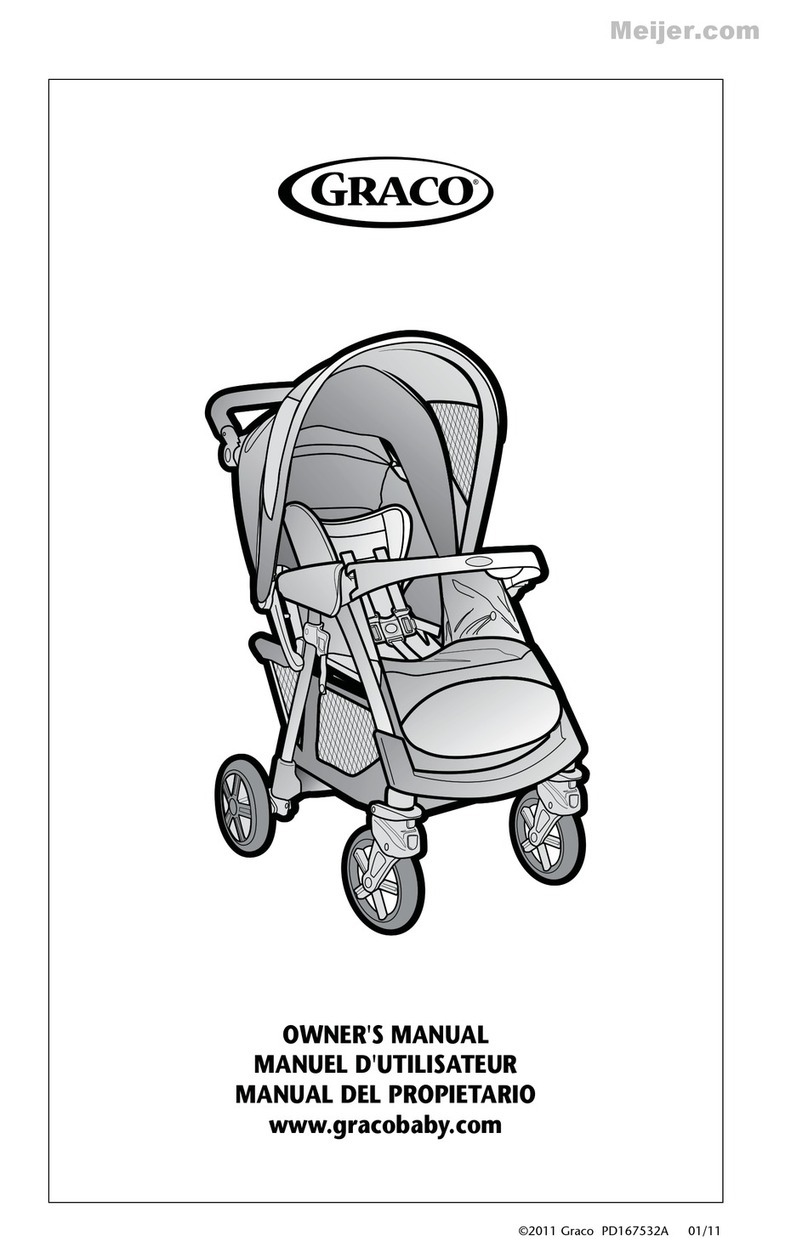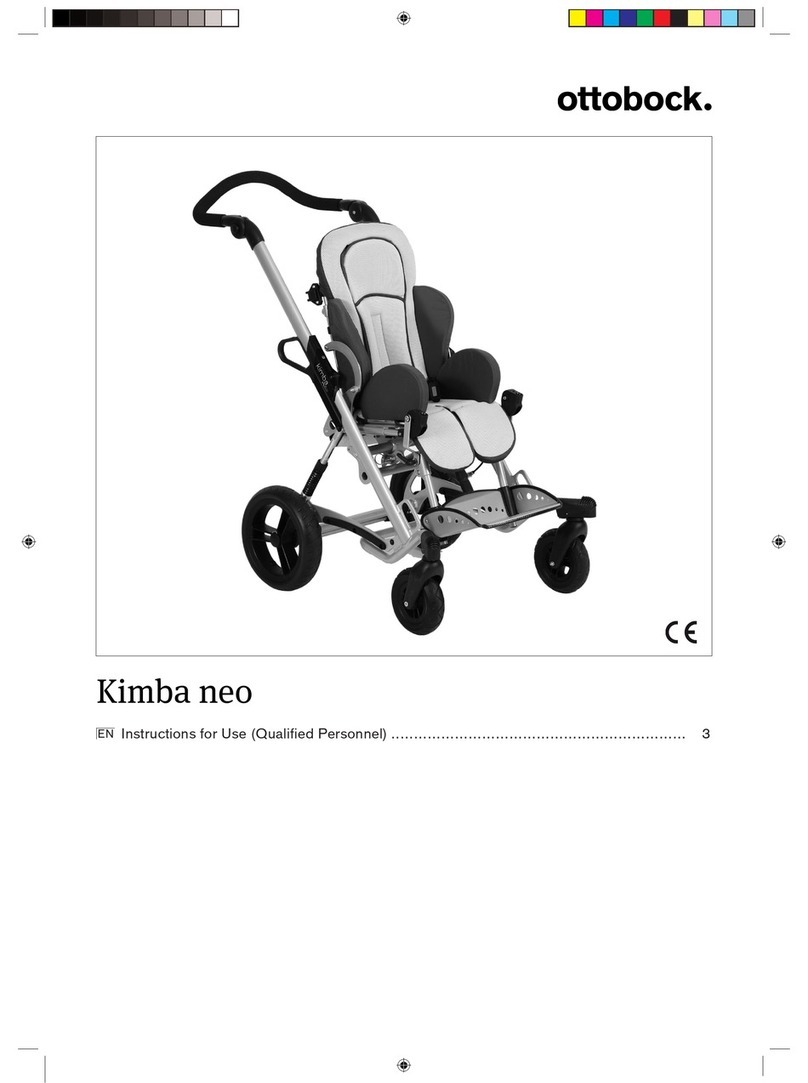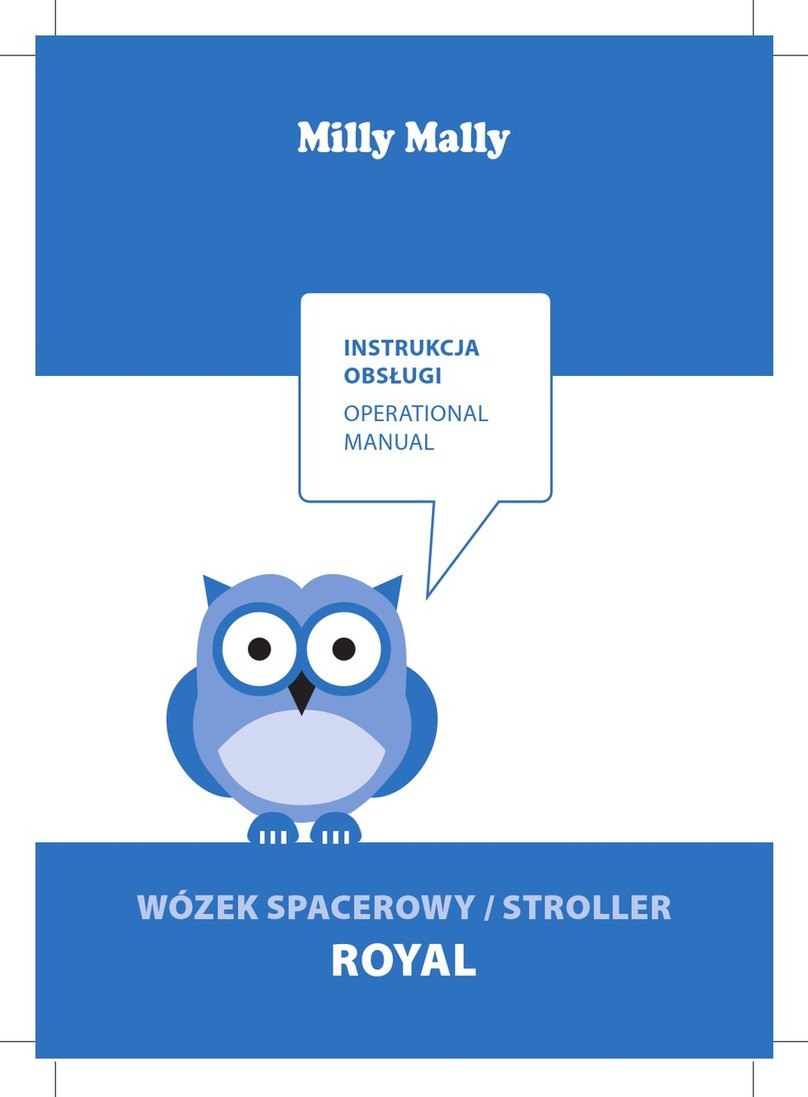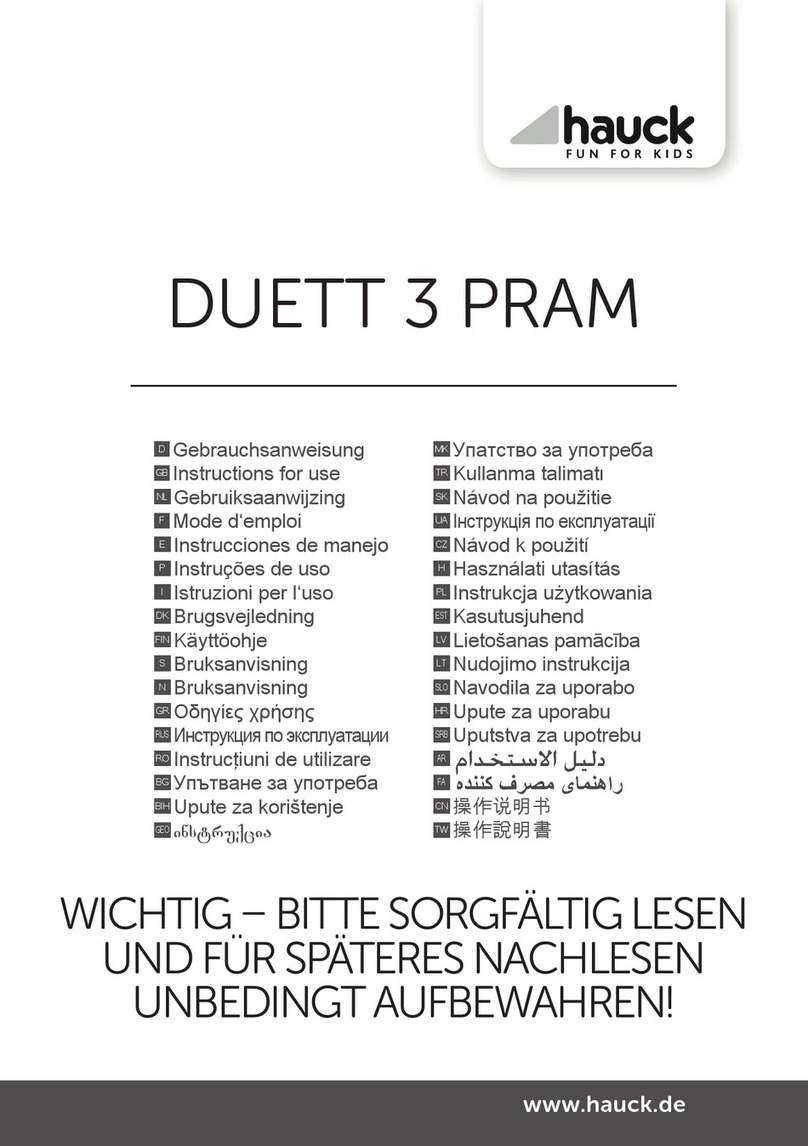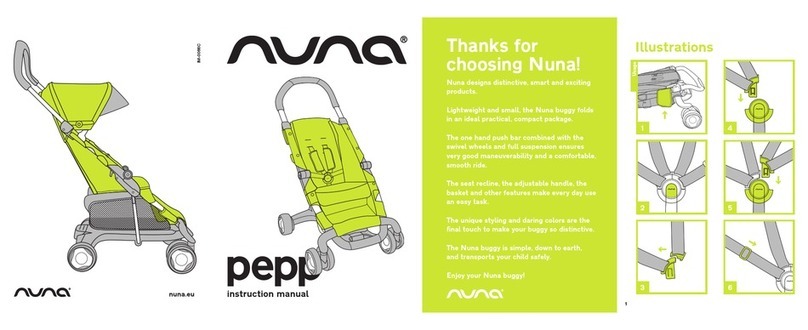
10
LISTA DEI COMPONENTI
Vericare di avere tutti i componenti per questo modello prima di
assemblare il prodotto. Se qualche parte è mancante, si prega di
rivolgersi al Customer Service Chicco. Per il montaggio del prodotto
non è necessario usare alcun attrezzo. Per assemblare il prodotto è
necessario disporre dei seguenti pezzi:
• Telaio
• Seduta con tessile
• Capote
• Manicotto paracolpi
• Kit comfort (spallacci e spartigambe)
• Cestello porta oggetti
• Mantellina parapioggia
• 2 ruote posteriori
• 2 ruote anteriori
Nota importante: le immagini e le istruzioni contenute in questo
libretto si riferiscono ad una versione del passeggino.
PRIMO MONTAGGIO PASSEGGINO
ATTENZIONE: Eettuare questa operazione facendo attenzione
che il bambino ed eventuali altri bambini siano a debita distanza.
Assicurarsi che in queste fasi le parti mobili del passeggino non ven-
gano a contatto con il corpo del bambino.
1. Per aprire il passeggino impugnare il maniglione ed il tubo an-
teriore e far ruotare no ad udire un click di completa apertura
(Fig. 1).
2. Inserire la ruota anteriore nell’apposito foro nel telaio, no a senti-
re il clack di bloccaggio (Fig. 2). Ripetere la stessa operazione per
l’altra ruota anteriore.
3. Per montare le ruote posteriori inserire il perno della ruota nel foro
del tubo gamba posteriore (Fig. 3). Ripetere la stessa operazione
per l’altra ruota.
ATTENZIONE: Prima di utilizzare il passeggino accertarsi che le ruo-
te siano ben ssate alla struttura, tirandole verso l’esterno.
4. Per rimuovere le ruote anteriori occorre fare pressione con un og-
getto appuntito nell’apposita fessura posizionata nella parte an-
teriore del telaio (Fig. 4). Per rimuovere le ruote posteriori premere
il tasto di sgancio indicato nella gura 4A.
CESTELLO PORTAOGGETTI
5. Per montare il cestello al telaio del passeggino inserire i nastri
tessili nelle apposite asole plastiche presenti sulla parte anteriore
(Fig. 5) e laterali del telaio. (Fig. 5A). Vincolare le cerniere laterali
al tubo posteriore del telaio (Fig. 5B) e chiudere i nastri in velcro
(Fig. 5C).
Inne, chiudere la cerniera che avvolge il tubo posteriore (5D).
CINTURE DI SICUREZZA
6. Il passeggino è dotato di sistema di ritenuta a cinque punti di
ancoraggio costituito da due spallacci con relative asole di rego-
lazione, due cinture girovita ed uno spartigambe con bbia, già
montati.
Sullo schienale sono presenti tre coppie di asole per regolare in al-
tezza gli spallacci a seconda della corporatura del bambino (Fig. 6)
ATTENZIONE: Per l’utilizzo con bambini dalla nascita no a circa 6
mesi gli spallacci devono essere inseriti nelle asole più in basso (Fig.
6 - n. 1); può essere necessario ridurre la lunghezza delle cinture per
adattarle alla corporatura del bambino.
ATTENZIONE: Per adattare le cinture alla corporatura del bambino
utilizzare gli spallacci facendoli prima passare attraverso le due asole
di regolazione come indicato in gura 6.
Dopo aver adagiato il bambino nel passeggino, allacciare le cinture
facendo passare prima le due forchette nell’asola degli spallacci (Fig.
6A) e poi inserendole nella bbia spartigambe (Fig. 6B); regolare la
lunghezza delle cinture facendole aderire alle spalle e alla vita del
bambino.
Per sganciare la cintura girovita, premere il pulsante centrale della
bbia (Fig. 6C).
ATTENZIONE: Per garantire la sicurezza del bambino è indispensa-
bile utilizzare contemporaneamente spartigambe, cintura girovita
e spallacci.
ATTENZIONE: Dopo la rimozione delle cinture di sicurezza (es.
per il lavaggio), assicurarsi che le cinture siano riassemblate corret-
tamente usando i punti di ancoraggio. Le cinghie devono essere
nuovamente regolate. Per assicurarsi che le cinture siano aggancia-
te correttamente (sulla supercie posteriore dello schienale), una
volta messo il bambino e ssato, tirare con forza la parte nale delle
cinture.
KIT COMFORT
7. Il Kit Comfort è composto di 2 spallacci ed uno spartigambe im-
bottiti (Fig. 7).
Inlare le cinghie negli spallacci ed inserire la bbia nello spartigam-
be imbottito.
MANICOTTO PARACOLPI
8. La seduta è dotata di manicotto paracolpi. Per agganciare il ma-
nicotto inserire lo stesso nelle sedi in prossimità dello snodo (Fig.
8) con il pulsante di sgancio rivolto verso il basso (Fig. 8A) e as-
sicurarsi che il manicotto sia ben agganciato tirandolo verso di
sé. Per estrarre il manicotto paracolpi premere i due tasti laterali
esterni (Fig. 8A) ed estrarlo dalle sedi. Per facilitare l’alloggiamen-
to del bambino è possibile sganciare solo un lato del manicotto.
Il manicotto è utilizzabile sia in congurazione fronte strada sia
fronte mamma.
ATTENZIONE: Allacciare sempre il bambino con le cinture di sicu-
rezza. Il manicotto NON è un dispositivo di ritenuta del bambino.
ATTENZIONE: Il manicotto non deve essere utilizzato per sollevare
il prodotto con il bambino all’interno.
MONTAGGIO SEDUTA AL PASSEGGINO
9. Per montare la seduta del passeggino sul telaio occorre inserire la
stessa sulle apposite sedi plastiche no ad udire il click di avvenu-
to aggancio (Fig. 9).
Per facilitare l’aggancio della seduta al passeggino sui lati della se-
duta sono presenti delle fessure guida che indicano il corretto alli-
neamento della seduta. La seduta può essere montata sia in con-
gurazione fronte strada (Fig. 9A) sia fronte genitore. (Fig. 9B)
ATTENZIONE: Prima dell’utilizzo assicurarsi che la seduta sia ben
agganciata tirandola verso l’alto.
Per sganciare la seduta premere contemporaneamente i tasti posti
sugli snodi della seduta e tirare verso l’alto. (Fig. 9C)
ATTENZIONE: Le operazioni di sgancio/aggancio della seduta de-
vono essere eettuate senza il bambino all’interno.
REGOLAZIONE SCHIENALE
10. Lo schienale è regolabile in tre dierenti inclinazioni; per rego-
larlo occorre azionare la leva posta sul retro dello schienale del
passeggino (Fig. 10). E’ possibile regolarne l’inclinazione no al
raggiungimento della posizione desiderata. Rilasciando il tasto
lo schienale si bloccherà nella posizione più vicina.
ATTENZIONE: Con il peso del bambino le operazioni possono ri-
sultare più dicoltose.
ATTENZIONE: Con la seduta fronte strada ed il maniglione com-
pletamente abbassato, non è possibile regolare l’inclinazione dello
schienale, sollevare il maniglione di una posizione per poter com-
piere questa operazione.
REGOLAZIONE POGGIAGAMBE
11. Il poggiagambe è regolabile in due posizioni. Per regolarlo agire
contemporaneamente sui due tasti posti ai lati del poggiagam-
be (Fig. 11).
CAPOTE
12. Il passeggino è dotato di capote parasole e paravento regolabile
in più posizioni.
Per regolare la capote tirare e/o spingere centralmente la stessa (Fig.
12). Per ottenere una protezione più ampia aprire la cerniera presen-
te sulla capote e aprire la restante parte tessile (Fig. 12A). Sollevando
la patella tessile presente nella parte superiore della capote (Fig.
12B) è possibile accedere alla sezione in rete, per poter osservare
il bambino.
